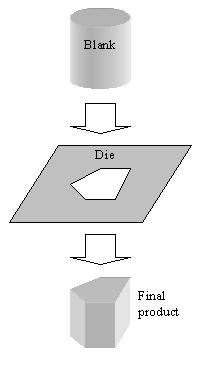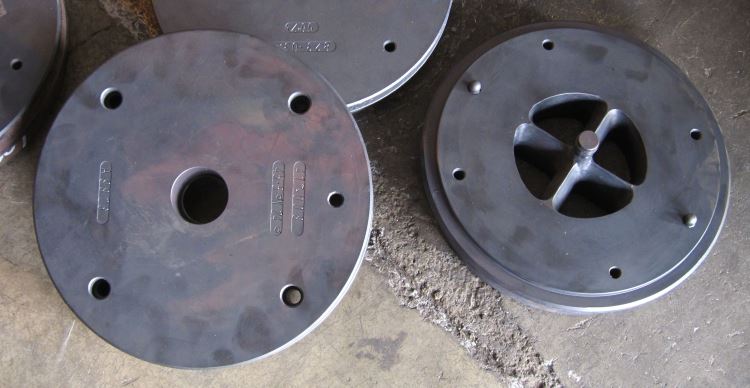Extrusion is a process used to create objects of a fixed cross-sectional profile. A material is pushed through a die of the desired cross-section. The two main advantages of this process over other manufacturing processes are its ability to create very complex cross-sections, and to work materials that are brittle, because the material only encounters compressive and shear stresses. It also forms parts with an excellent surface finish.
Drawing is a similar process, which uses the tensile strength of the material to pull it through the die. This limits the amount of change which can be performed in one step, so it is limited to simpler shapes, and multiple stages are usually needed. Drawing is the main way to produce wire. Metal bar and tube are also often drawn.

Extrusion may be continuous (theoretically producing indefinitely long material) or semi-continuous (producing many pieces). The extrusion process can be done with the material hot or cold. Commonly extruded materials include metals, polymers, ceramics, concrete, play dough, and foodstuffs. The products of extrusion are generally called “extrudates”.
Hollow cavities within extruded material cannot be produced using a simple flat extrusion die, because there would be no way to support the centre barrier of the die. Instead, the die assumes the shape of a block with depth, beginning first with a shape profile that supports the center section. The die shape then internally changes along its length into the final shape, with the suspended center pieces supported from the back of the die. The material flows around the supports and fuses together to create the desired closed shape.

The extrusion process in metals may also increase the strength of the material.

